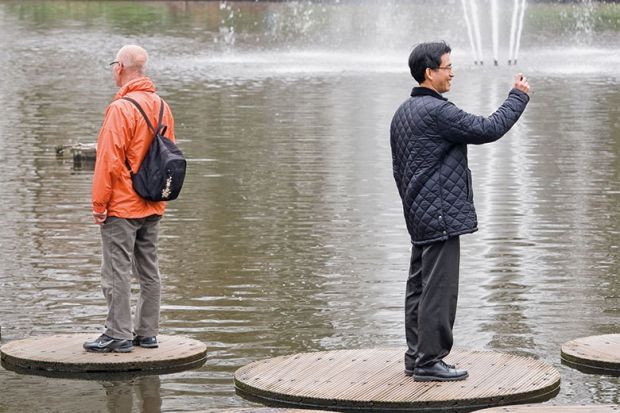It has long been thought that physical proximity drives collaboration between researchers on university campuses. Now a new study conducted at the Massachusetts Institute of Technology has confirmed that this still holds true, even in the age of easy online communication.
The study, which analysed 40,358 published papers and 2,350 patents that stemmed from MIT research and appeared between 2004 and 2014, found that academics located in the same workspace were three times more likely to collaborate than those who were 400m apart. The frequency of collaboration dropped by half again among researchers whose offices were 800m apart.
A similar, if less steep, curve was observed in relation to patents. Researchers in the same workplace were more than twice as likely to collaborate compared with those who were 400m apart; the frequency halved again among researchers who were 1,600m apart.
The research, led by Matthew Claudel, a doctoral student in MIT’s department of urban studies and planning and the MIT Lab for Innovation Science and Policy, has been published in the journal Plos One.
“Intuitively, there is a connection between space and collaboration,” Mr Claudel said. “That is, you have a better chance of meeting someone, connecting and working together if you are close spatially.” Yet it was nonetheless “an exciting result to find that across papers and patents, and specifically for transdisciplinary collaborations”, he added.
The research also confirms the importance of designing academic buildings to encourage cross-disciplinary research. For example, MIT’s Koch Institute for Integrative Cancer Research, which was intended to place research scientists and bioengineering experts in close proximity, had the highest rate of intra-MIT co-authorship on campus: 32 per cent of publications were written with at least one other member of the university’s staff.
These findings, the paper’s authors suggest, “point to the possibility of a natural ‘distance limit’ for collaboration”. Institutions keen to “support the cross-disciplinary collaborative activity that is increasingly vital to research and practice” may need to adopt “a new approach to socio-spatial organisation [that] may ultimately enrich the design and operation of places for knowledge creation”, they conclude.
Register to continue
Why register?
- Registration is free and only takes a moment
- Once registered, you can read 3 articles a month
- Sign up for our newsletter
Subscribe
Or subscribe for unlimited access to:
- Unlimited access to news, views, insights & reviews
- Digital editions
- Digital access to THE’s university and college rankings analysis
Already registered or a current subscriber? Login







